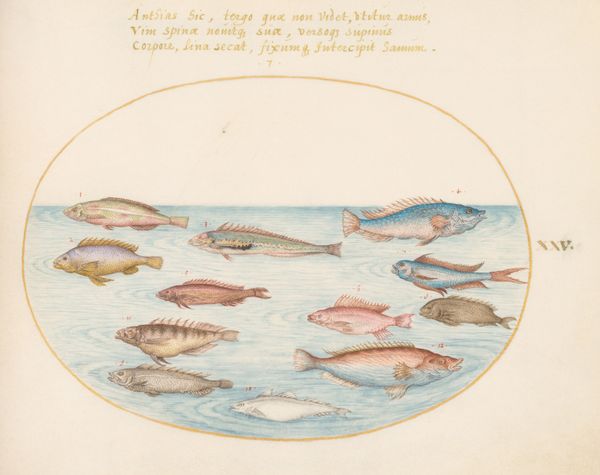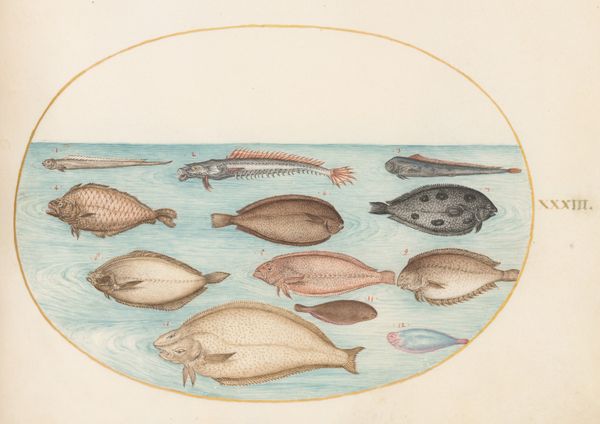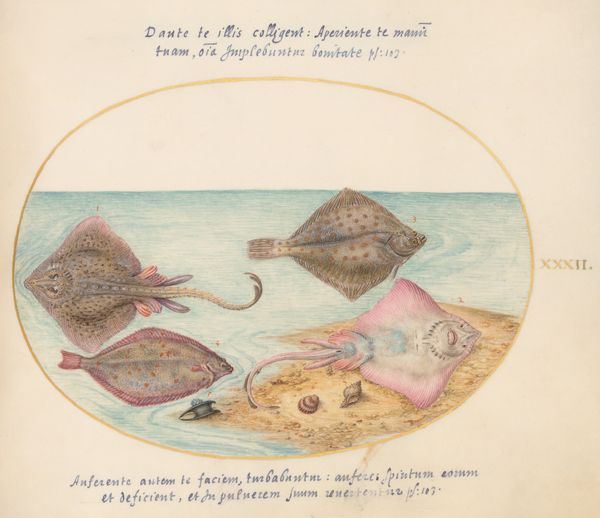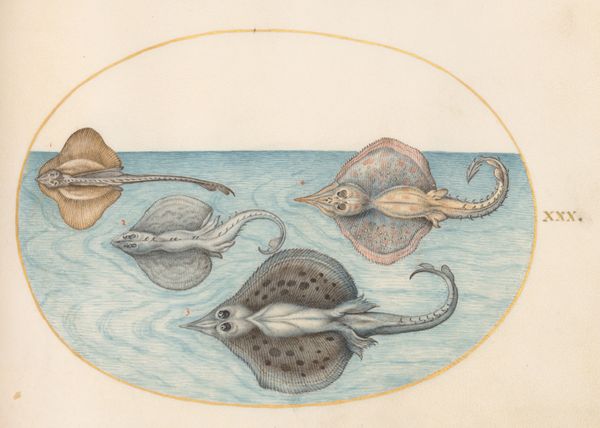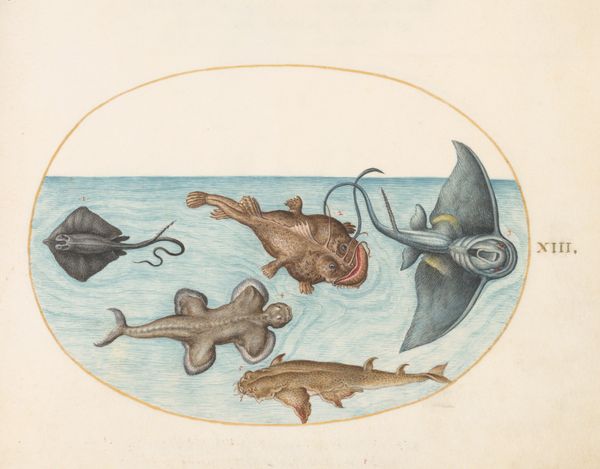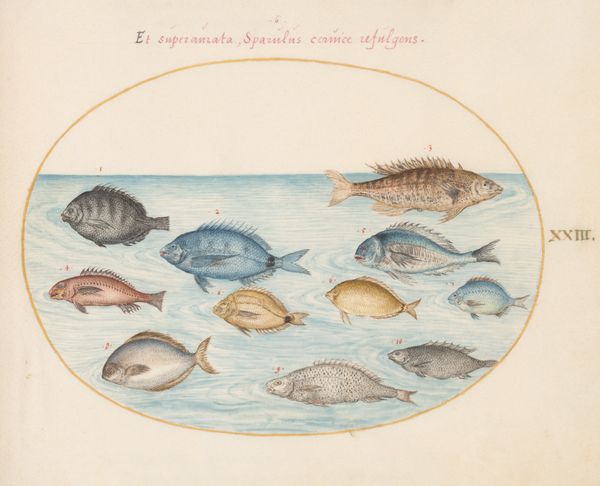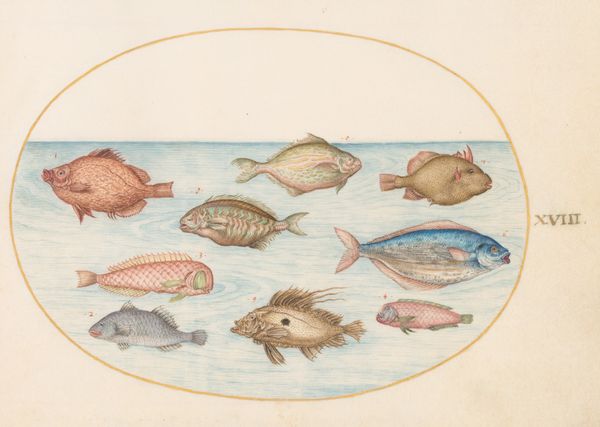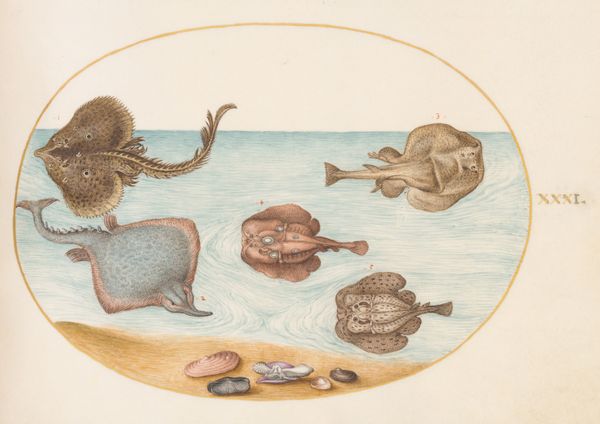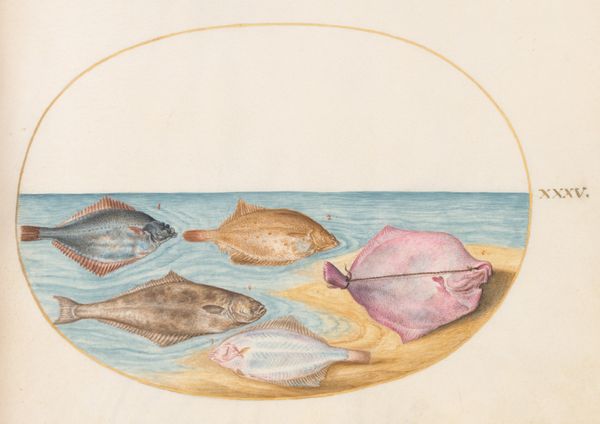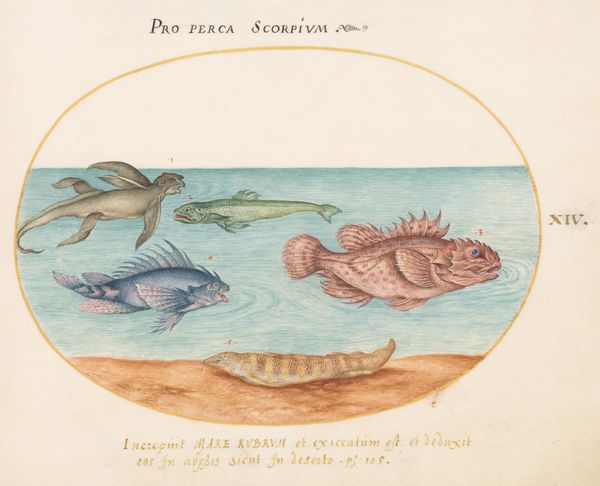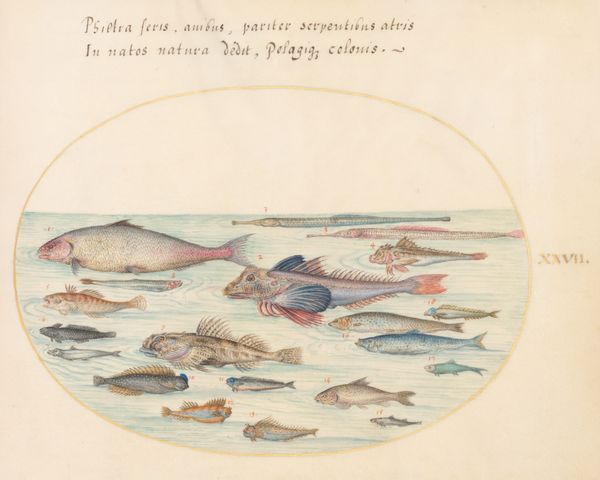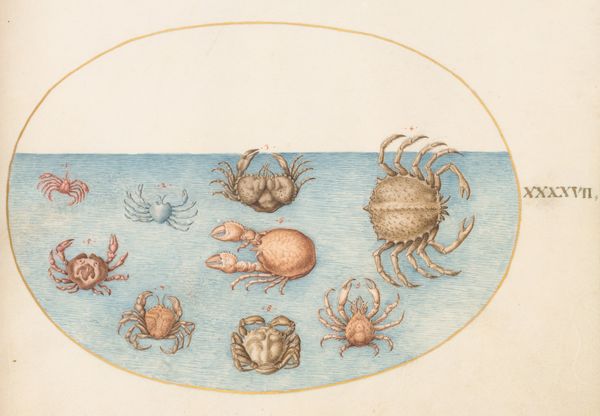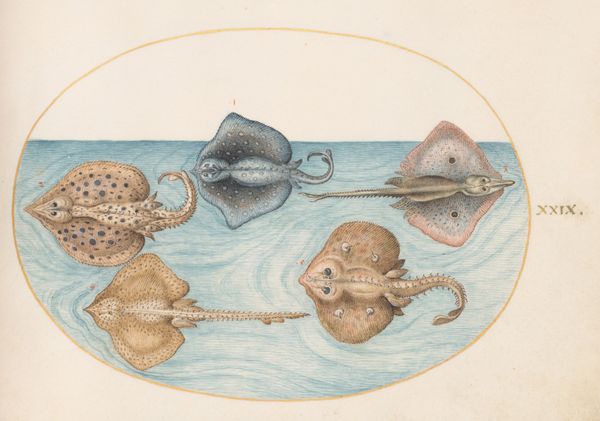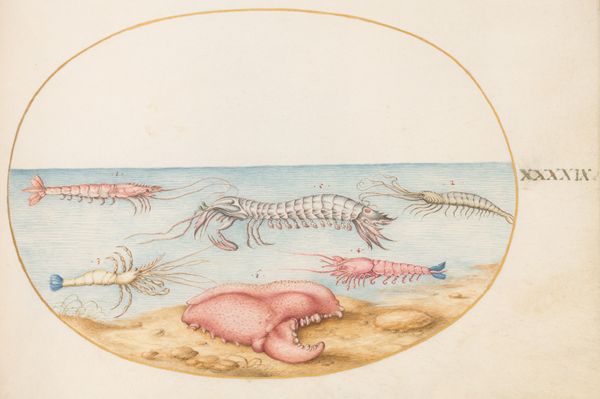
Plate 52: An Argonaut, Squid, Hermit Crabs, Shells, and a Crab c. 1575 - 1580
0:00
0:00
drawing, paper, watercolor
#
drawing
#
water colours
#
mannerism
#
paper
#
11_renaissance
#
watercolor
#
coloured pencil
Dimensions: page size (approximate): 14.3 x 18.4 cm (5 5/8 x 7 1/4 in.)
Copyright: National Gallery of Art: CC0 1.0
Art Historian: Welcome. Today we are looking at "Plate 52: An Argonaut, Squid, Hermit Crabs, Shells, and a Crab," a work made around 1575 to 1580 by Joris Hoefnagel. It's meticulously rendered in watercolor and coloured pencil. Artist: Wow, look at this little underwater tableau! It feels so whimsical, like a Renaissance screensaver or something. I mean, look at the colors, all soft and dreamy. And that little pink nautilus...utterly charming! Art Historian: Indeed. Hoefnagel was a key figure in the Mannerist movement. His work reflected a period grappling with representing the natural world amid shifting scientific paradigms. It also highlights the rising interest in natural history and collecting, especially in aristocratic circles. Artist: Collecting, huh? It does feel a bit like a curiosity cabinet exploded onto the page. I'm curious about that little drama between the hermit crabs, the way they seem to almost pose with the empty shells! Art Historian: The scientific accuracy mixed with obvious artistic flourishes are a hallmark of his work. Naturalists often employed artists, which meant the social status and wealth connected to the subject matter had as much value as a strict taxonomic accuracy. Artist: I bet. This reminds me a bit of childhood visits to aquariums. Except Hoefnagel's critters seem a bit…happier? Almost self-aware, like they know they’re being immortalized. Art Historian: The artist produced imagery that suited certain wealthy patrons of his day, like Emperor Rudolf II, for whom Hoefnagel also worked. Rudolf in particular fostered art and scientific development hand-in-hand. Artist: What a time to be alive, even if you're just a crab chilling on a beach made of paper! This piece just sings with playful wonder. There's something eternally captivating about that naive wonder that science was infused with. Art Historian: It shows us that observing nature was often a process embedded in social and political contexts. Each brushstroke potentially spoke to more than just observable fact. Artist: A feast for the eyes and mind indeed. Thank you. Art Historian: It was my pleasure.
Comments
No comments
Be the first to comment and join the conversation on the ultimate creative platform.
